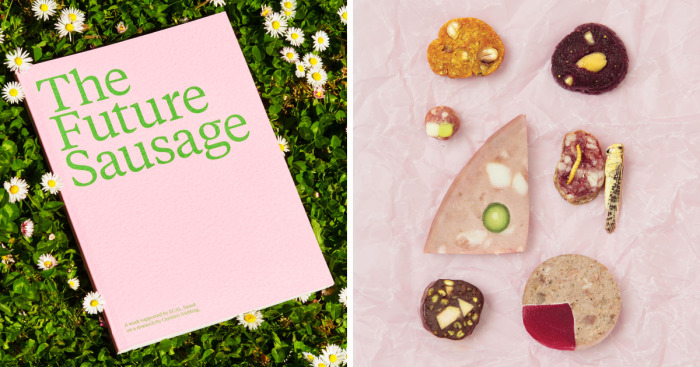
The Future Sausage: The Design Of The Sausages Explored, To Eat Less Meat In The Future
When I found out that we had to start eating less meat for several important reasons I wondered why the only solutions opted were the creation of fake meat or to start growing meat. Why not create new food items with the amazing variety of ingredients available on this beautiful planet? And even better, why wouldn’t we use the facilities of the butchers, who have been the cornerstone of our society for so long but now face losing their jobs? This is why, 2,5 years ago I started this project: The Future Sausage, to re-design this amazing food item to eat less meat in the future, starting now.
The sausage is one of mankind’s first-ever designed food items. A paragon of efficient butchery, it was designed to make the most of animal protein in times of scarcity, and dates back as far as 3300 BCE. Today, the sausage remains a cornerstone of our food culture. England alone has over 470 different types of breakfast sausages, and in Germany there are even sausage laws, dictating specific rules for the making of sausages. Now, according to the Food and Agriculture Organization (FAO), we are facing a serious shortage of protein-rich-food. Meat, in particular, will be scarce. One reason for this is over-consumption: in today’s world, we simply consume too many animal products. So, I wondered, can we look to the sausage to provide a solution once again?
The Future Sausage is a book that explores the sausage as an edible designed object. The book – or manual, if you will – takes you through all the building blocks of a sausage: From the skin to the innards, with stops along the way to explore issues like moistness, flavouring, glue and preservation. The first and second part of the book looks at the design of the sausage. It catalogues different types of sausages, their various means of construction, and which types of skins can be used, when, and why. The third part contains a descriptive list of lesser-known ingredients, carefully selected for their “future potential”. I hope to introduce you to, or remind you of the many different kinds of edible proteins that exist on this planet. The goal is to move away from our relatively impoverished “supermarket selection” and transform ourselves from Eximius forni-vore (supermarket- eater) back to Omni-vore (all-eater). The last section of the book contains a “sausage matrix”, which sums up all the categories and sausage elements previously addressed in the book. These are simplified as icons, textures and colours. With this matrix, you can understand how to construct different types of sausages, while using the similar components and techniques that are normally used in sausage making.
With The Future Sausage in hand, you will encounter a whole new set of ingredients and ideas. Hopefully, you will be inspired and impressed by this versatile food item, but you will surely never look at a sausage in the same way, again.
More info: thefuturesausage.com
Clockwise, from top left: Carrot, apricot and coconut dried sausage Berry, date and almond dried sausage, Insect salami, Berry and liver sausage, Apple blood sausage, Potato and pea fresh sausage, Vegetable mortadella. Picture ECAL/Noortje Knulst.
Blood sausage is traditionally eaten with apple, and here the two ingredients are combined in one sausage. Picture Jonas Marguet.
A sausage designed to accompany cheese and fruit, with the addition of the lean single- muscle meat of the heart, which cures evenly with the rest of the sausage. Picture Jonas Marguet.
With insect flour and a tonka- bean infusion, the insect pâté is dipped in beeswax to prevent it from discolouring and to increase its shelf life.
Traditionally, many types of meats and especially liver-based foods are eaten with a fruitbased accompaniment. Here, the mild liver is combined with a tangy and sweet raspberry gel. Picture Jonas Marguet.
Traditionally, many types of meats and especially liver-based foods are eaten with a fruitbased accompaniment. Here, the mild liver is combined with a tangy and sweet raspberry gel. Picture Jonas Marguet.
Collage of insect pâté, accompanied by a grasshopper wing and variations on traditional ingredients: ewe’s milk foam, mealworms, Madeira wine and butter. Picture Emile Barret.
Collage deconstructing a mortadella of the future containing, alongside the traditional pork , also broccoli, carrots, romanesco, cauliflower and pistachio nuts. Picture Emile Barret.
Collage of a bangers and mash sausage, accompanied by some of its pre-minced ingredients: chia seeds, potato and peas. Picture Emile Barret.
The Future Sausage – Book photo by Younès Klouche.
573views
Share on Facebook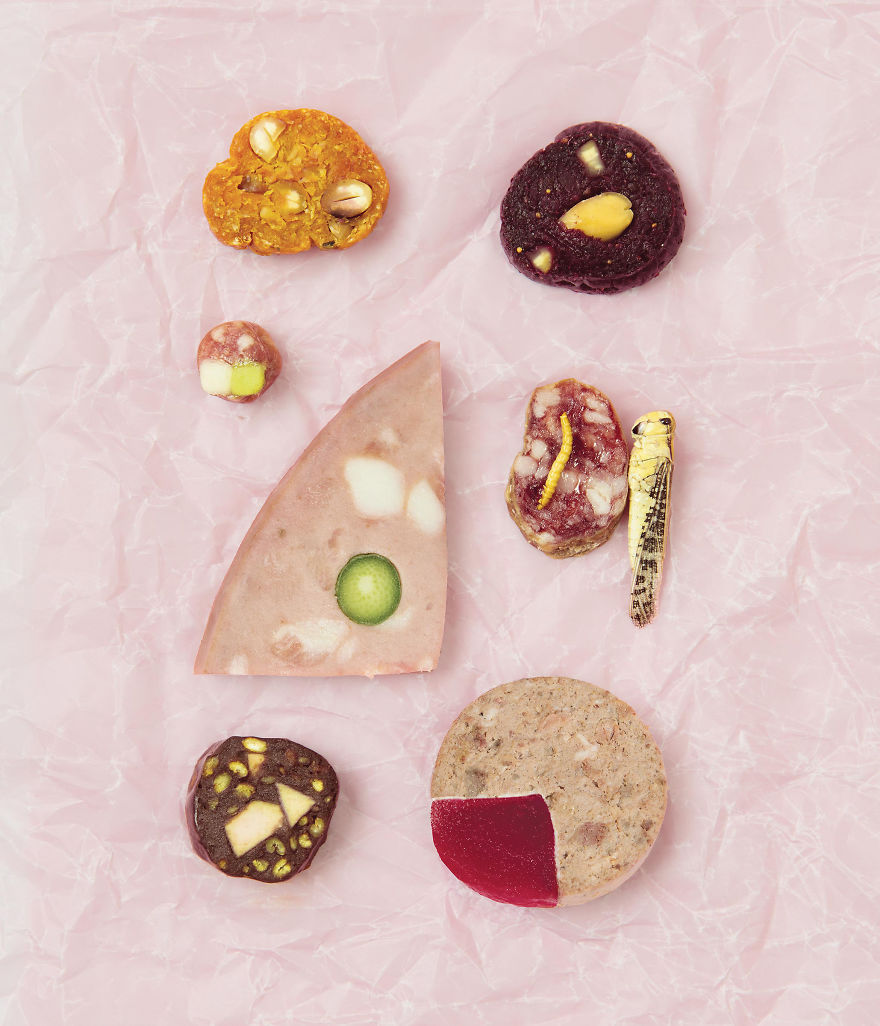
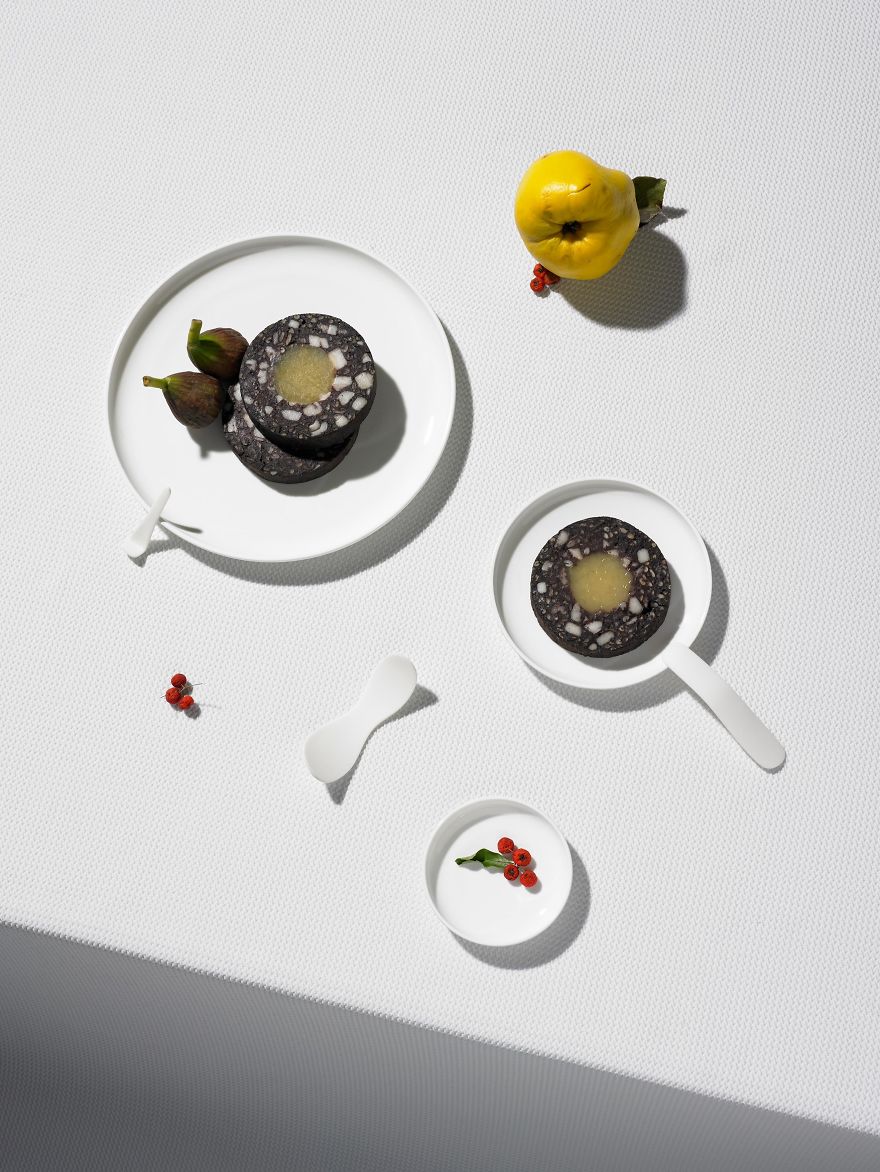
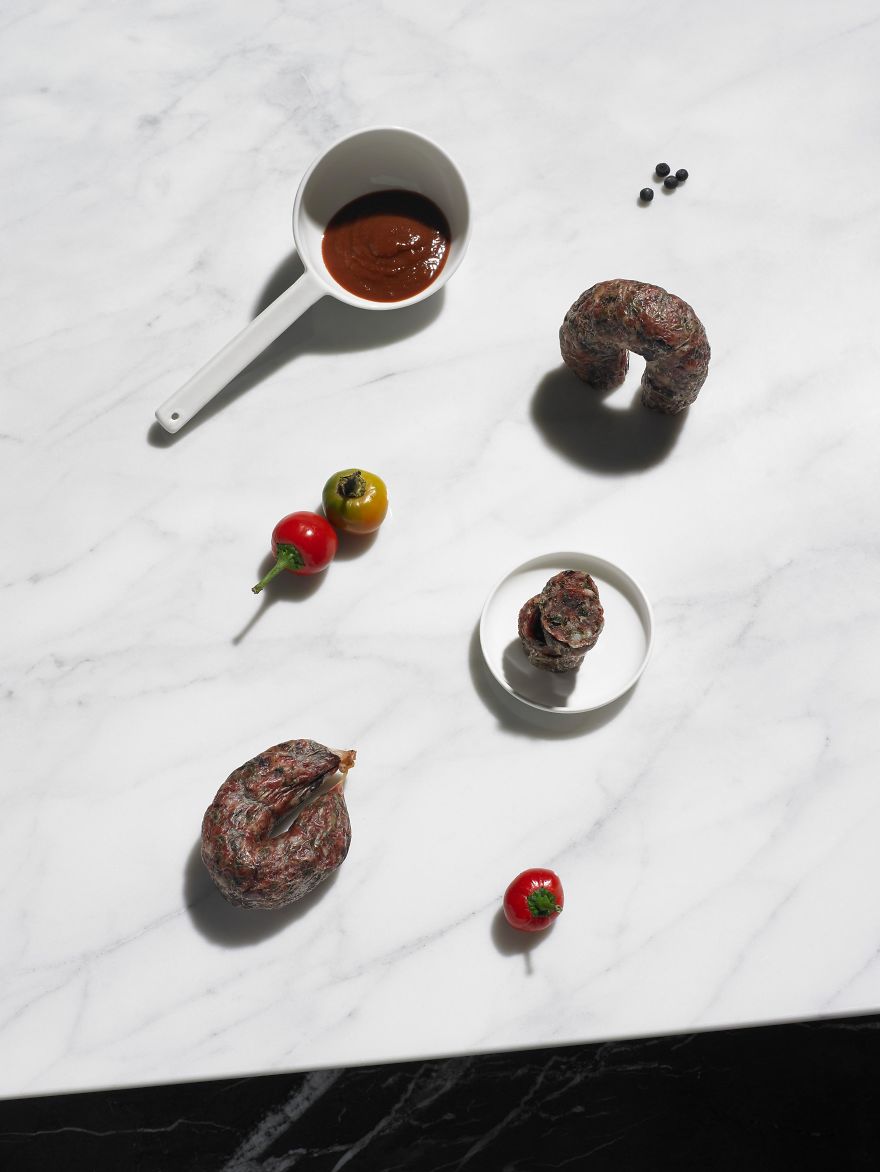
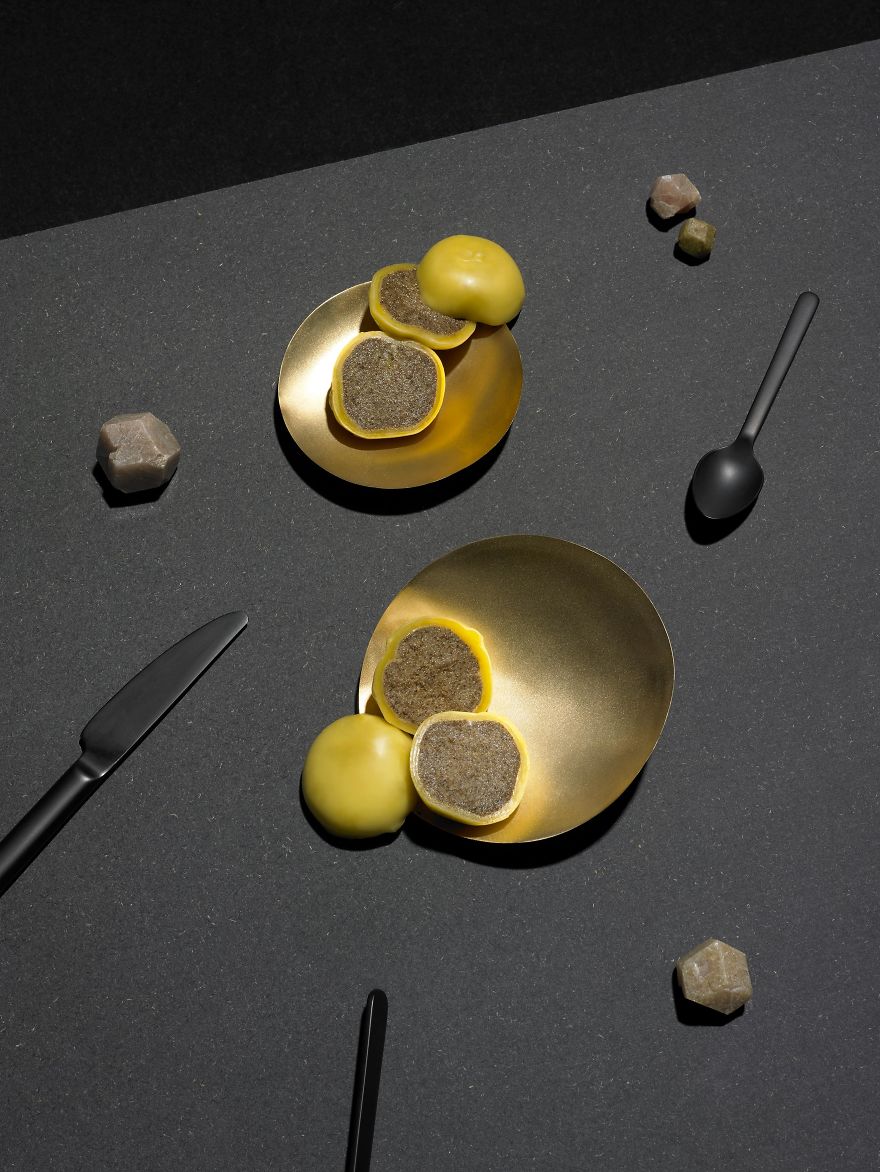
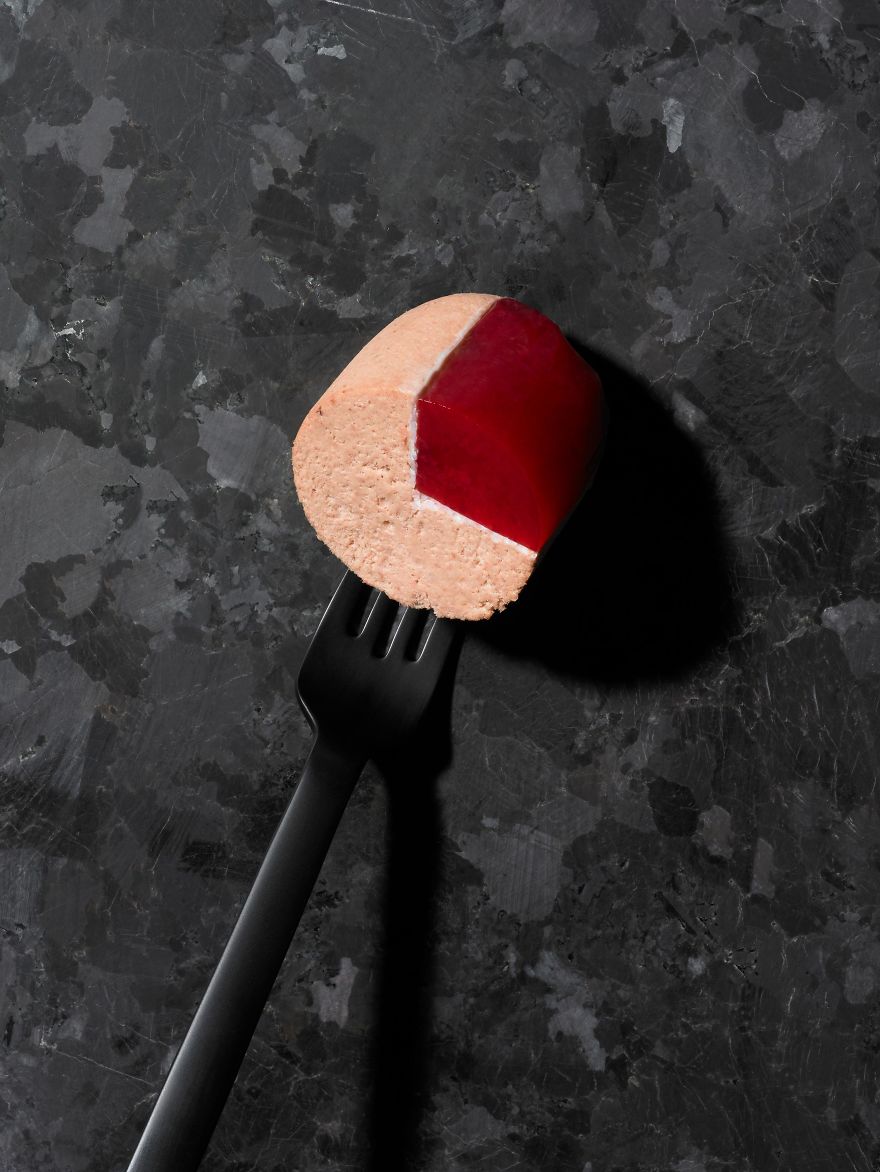
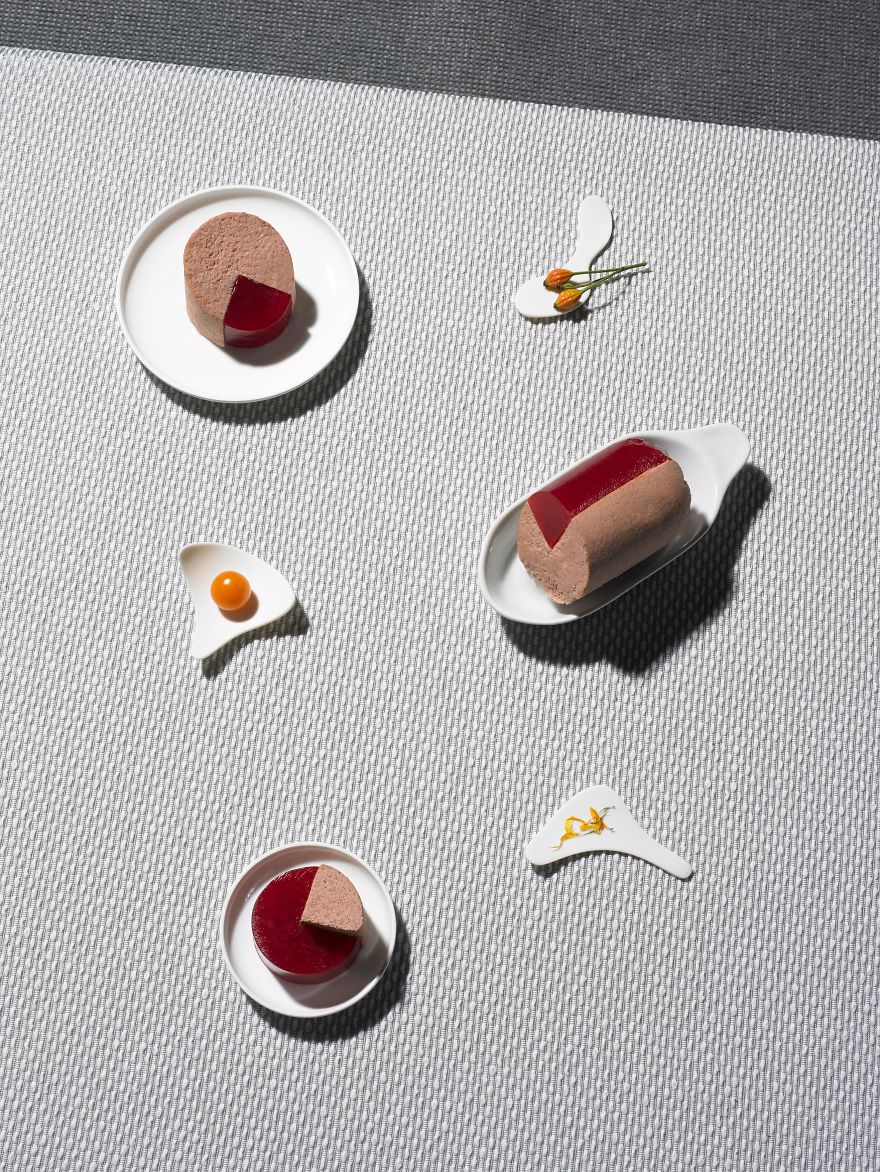
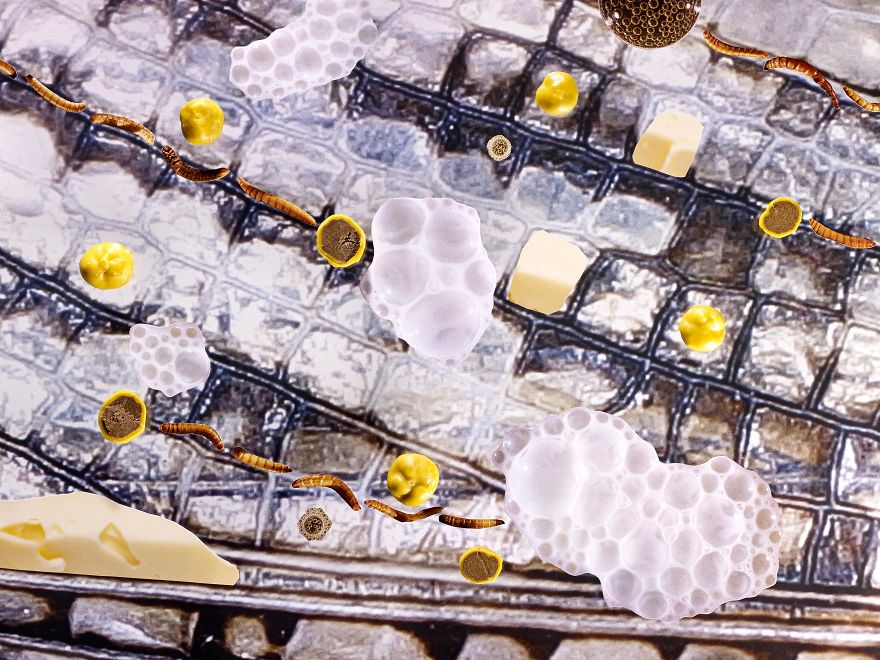
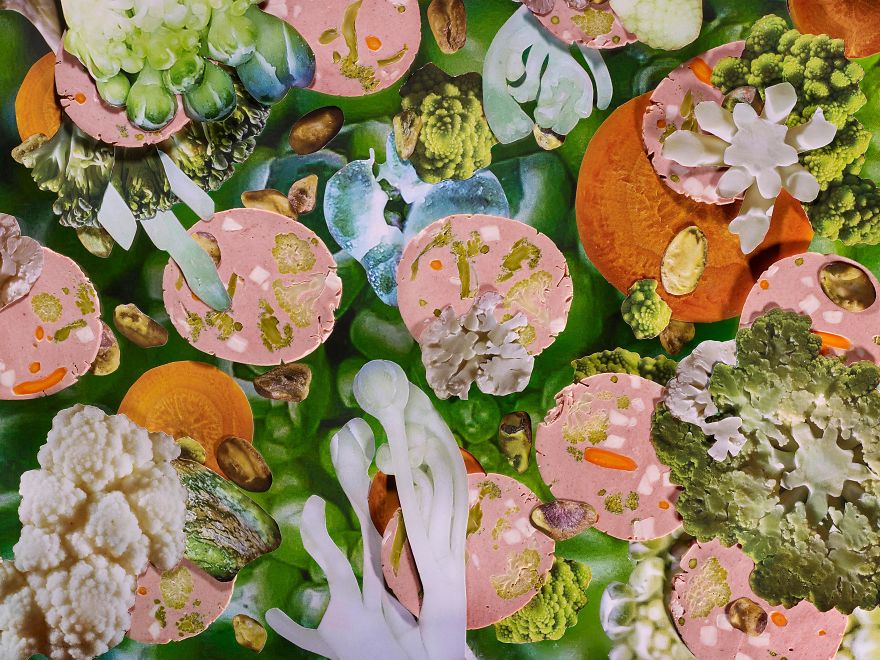
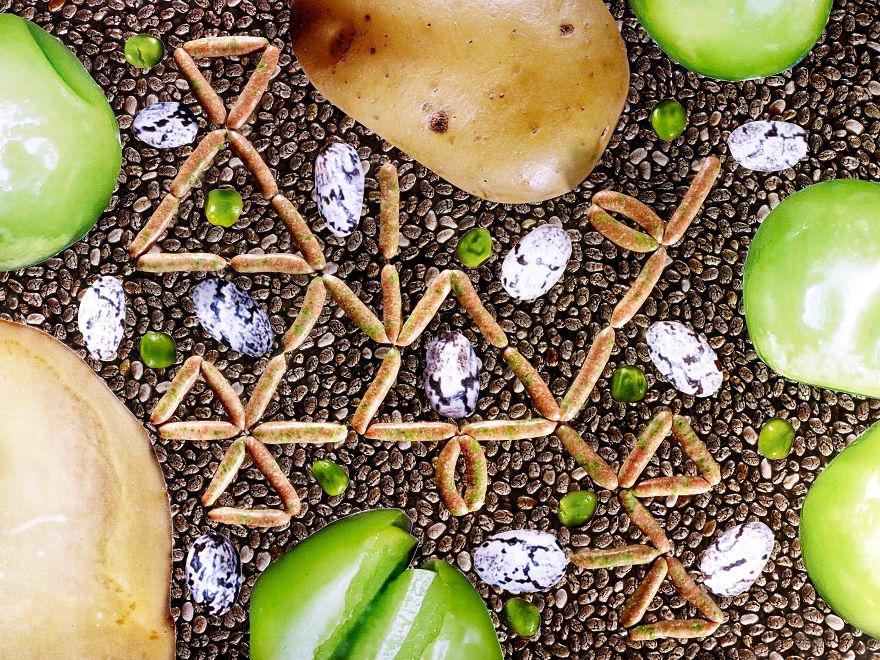
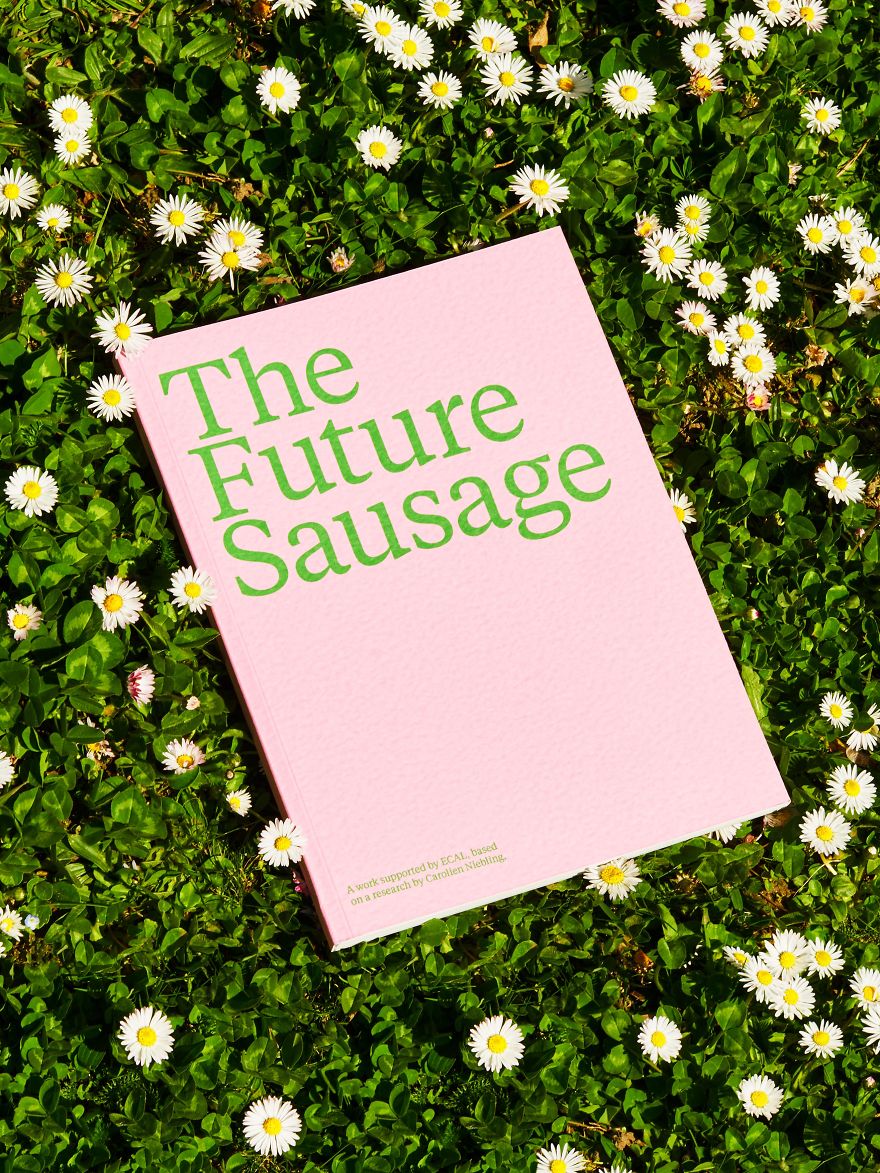



11
0